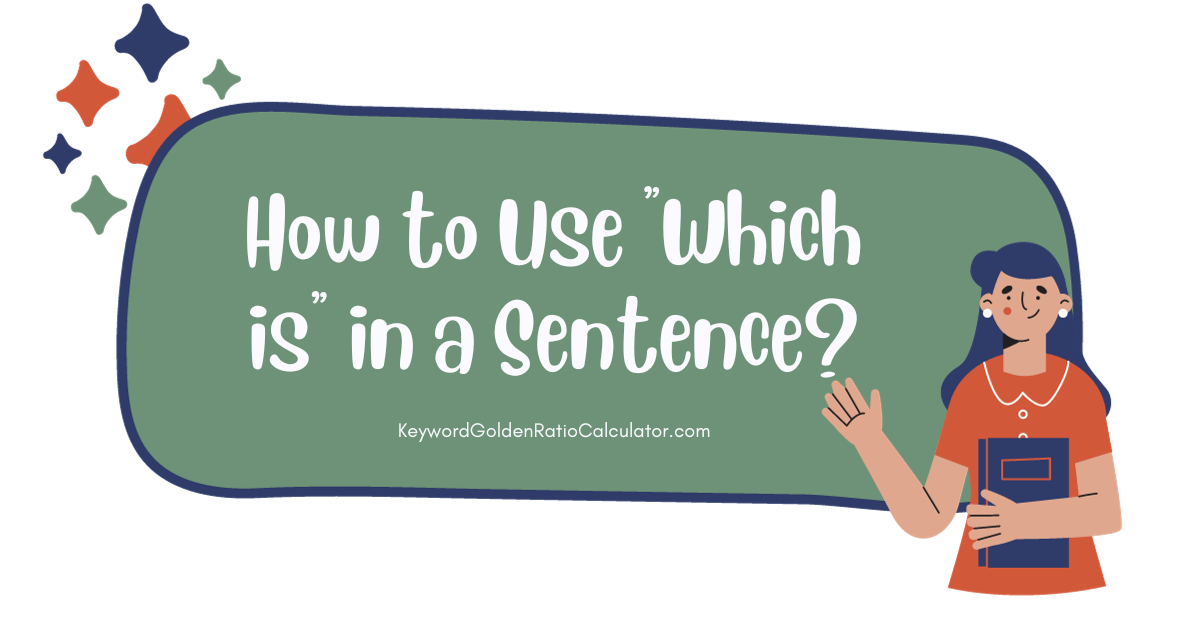Let’s face it; English can be a tricky language, especially when it comes to seemingly insignificant words that can actually make a huge difference in your sentences.
One such phrase is “which is.” It often leaves non-native English speakers scratching their heads in confusion.
Merely understanding the mechanics of “which is” can elevate your written and spoken English to new heights.
This blog post will be your comprehensive guide to understanding and correctly using “which is” in English sentences. So, let’s break it down.
Understanding “Which is”
“Which is” is an example of what we call a relative pronoun phrase.
But don’t let the grammar terminology intimidate you, for it’s actually quite simple.
Using “Which is” to Provide Additional Information
“Which is” is often used to offer more data or explanations about a noun previously mentioned in the sentence. For instance:
- The 4th of July, which is a national holiday, is a major event in America.
In this example, “which is a national holiday” offers more information about “The 4th of July.”
“Which is” versus “That is”
Some language enthusiasts might ask, can I replace “which” with “that”?
Indeed, you can, but there are nuances to be considered.
Distinguishing Between Essential and Non-essential Clauses
In English grammar, “that” is usually used to introduce essential information, also known as restrictive clauses.
In contrast, “which” introduces additional, but non-essential information, also known as non-restrictive clauses.
To illustrate:
- Books that are written by J.K. Rowling are very popular. (Essential information)
- Harry Potter, which is a series written by J.K. Rowling, is very popular. (Additional information)
In the first sentence, the relative clause “that are written by J.K. Rowling” is essential because it specifies which books we are talking about.
In the second example, the relative clause “which is a series written by J.K. Rowling” simply provides extra information about Harry Potter.
Harnessing “Which is” in Professional Writing
Casting “which is” appropriately can significantly enhance your professional writing, bestowing it with a flow and level of detail that achieves clarity without sacrificing conciseness.
The Magic of Punctuations
When using “which is” in the middle of a sentence, remember to introduce it with a comma.
This minor punctuation can prevent your sentence from becoming confusing.
For example:
- I bought a new car, which is a red convertible.
Without the comma, the sentence can become hard to decipher, as the subject is less visibly separated from the additional information.
Conclusion – Strengthening Language Skills with “Which is”
With a fundamental understanding of “which is” and its correct usage, you’ll surely see a marked improvement in your English language skills.
Embracing the “which is” phrase can make your writing more fluid and transparent.
So, the next time you draft an email or write a story, remember to include a dash of “which is”!
“Language shapes our behavior and each word we use is imbued with multitudes of personal meaning.” -Dr. Timothy Leary.
Now that we’ve deciphered another piece of the English language puzzle, which bit would you like to explore next?
FAQs About “How to Use “Which is” in a Sentence?”
What does “which is” mean in a sentence?
“Which is” is a phrase used in English to introduce a relative clause. It’s used to provide more information about or clarify the subject or object previously mentioned in the sentence.
Can you provide an example of “which is” used in a sentence?
Sure, an example is: “I bought a new shirt, which is blue.” In this sentence, ” is” is used to additional information about the, specifying its color.
Are there criteria for using “which is” in a sentence?
Yes, remember that “which is” is typically used to introduce non-restrictive clauses. Non-restrictive clauses are those that provide additional information that isn’t essential to understanding the sentence. This contrasts with restrictive clauses that contain essential information.
Can “which is” be used at the start of a sentence?
Yes, but it’s less common. “Which is” at the start of a sentence usually connects the sentence to the one before it, often when the second sentence is providing clarification or adding information.
What kind of punctuation should be used with “which is”?
Use commas before “which is” if it introduces non-restrictive clause. However, if it’s starting a sentence, a period or a semicolon would be more suitable.
Can “which is” be used for anything other than objects or things?
Yes, you can use “which is” to provide more information or specify something related to persons, places, periods, and more. The key is that it’s clarifying or adding to something mentioned before.
How is “which is” different from “that is”?
“That is” is used to introduce restrictive clauses, meaning the information that follows is necessary to understand the sentence. On the other hand, “which is” introduces non-restrictive clauses, or optional additional information.
Is the usage of “which is” considered formal or informal English?
The use of “which is” is common in both formal and informal English. The tone doesn’t really change its usage.
Are there any common mistakes to avoid when using “which is”?
A common mistake is to use “which is” when “that is” would be more appropriate, and vice versa. Remember that “which is” should introduce non-essential or additional information.
What would be a simple rule to remember when using “which is” in a sentence?
A simple rule to remember is that “which is” provides extra non-essential details about a previously mentioned object or subject in the sentence. If the information is essential, “that is” should be used instead.

